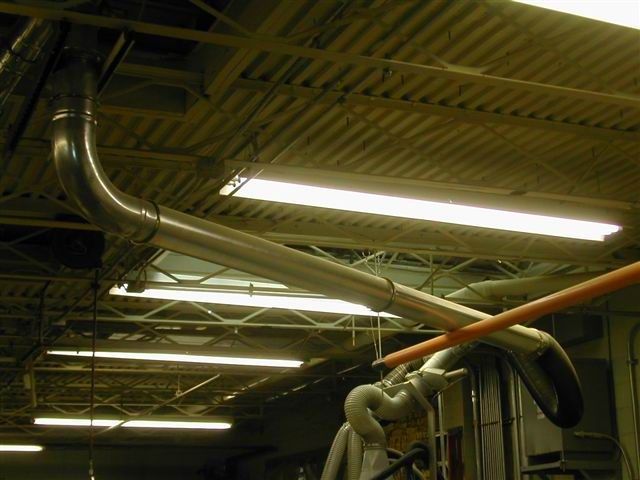Question
I have an 1100 cfm Jet dust collector (with cartridge filter and cleaning handle on top). I also have a 20 gallon garbage can type separator with one of those inexpensive plastic things on top that is supposed to make it act somewhat like a cyclone. The inlet at the blower is 6 inches but has a plastic sleeve that fits over it with two 4 inch inlets. I want to remove the plastic sleeve with the 4 inch inlets and just use the 6 inch inlet. I was told that this would increase suction but would also suck out all the contents of the separator. Can I place a cyclone separator (like the one Oneida sells) in line with the jet without having all the larger chips sucked out of the drum? I also built a shed outside my shop to house the collector but did not place any vents or openings between the shop wall and shed that houses the collector. I read something about negative pressure and don't quite understand the purpose of a vent between the two walls. Do I really need to have an opening/vent between the walls? Could someone in dummy terms please explain why and what the results would be if I didn't put in the vent?
Forum Responses
(Cabinetmaking Forum)
From contributor J:
I imagine that a cyclone separator would work, but you would have to check the specs of the cyclone to see if it will handle the cfm you want to run. As for the vents in your wall, they are used to return the air that you have just sucked out of the shop. If you are sucking out 1500 cfm, where is it going? How is it getting back? If your shop is small and airtight, then you could create a negative air pressure in your shop. I really don't think that the negative air pressure will be a big deal. I do think that you will suck out all of your hot air in the winter.
As for adding a cyclone inline, I think that's your best bet for chip removal.
The other reason to do some research is, you'll want to calculate how much cfm you'll lose with your ductwork. You may find after all this, your collector is not quite up to the challenge of getting all the dust out.
